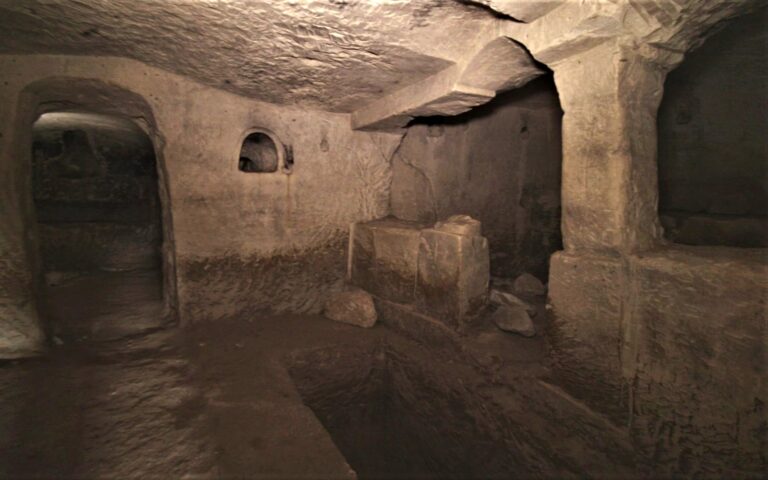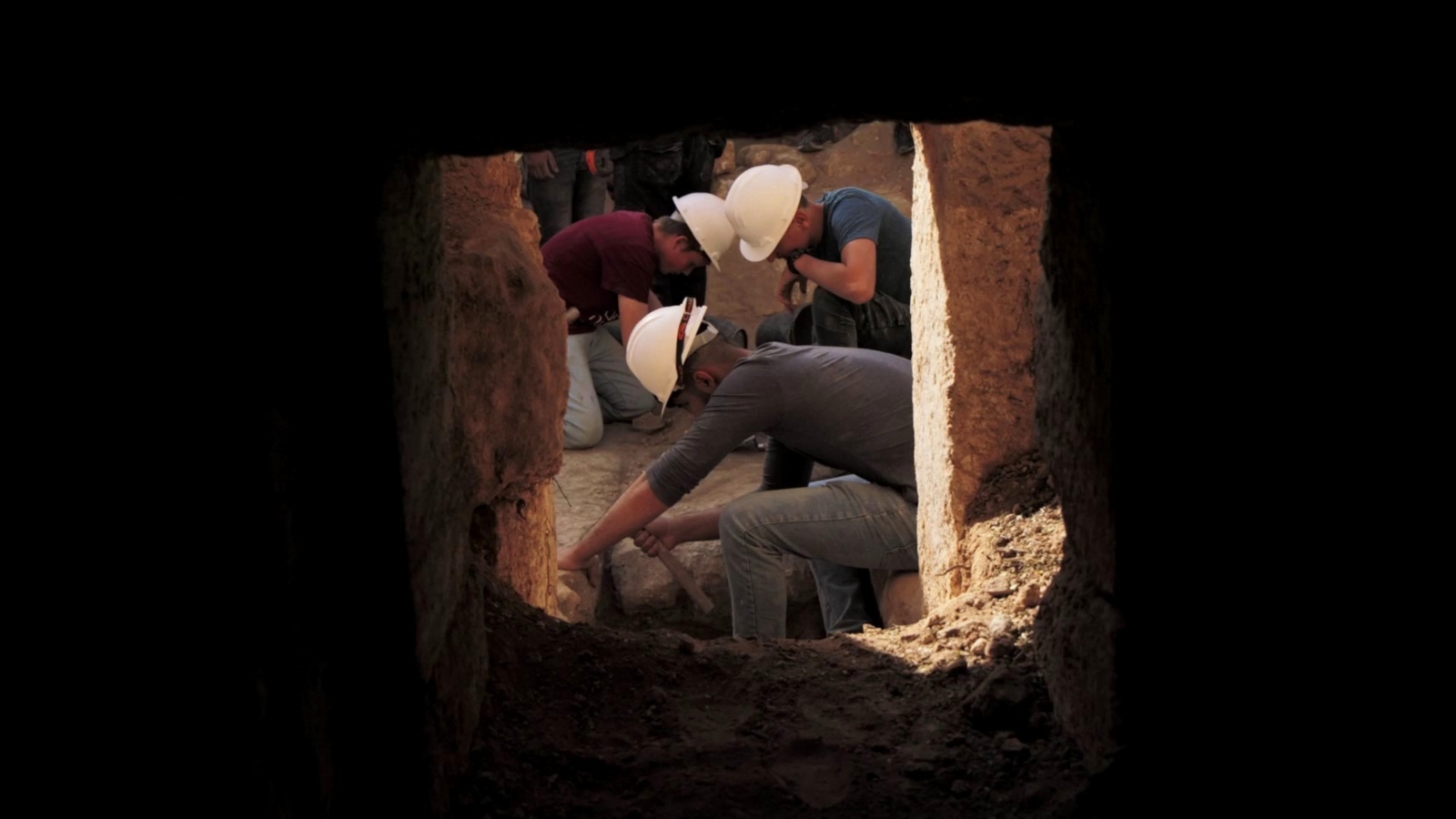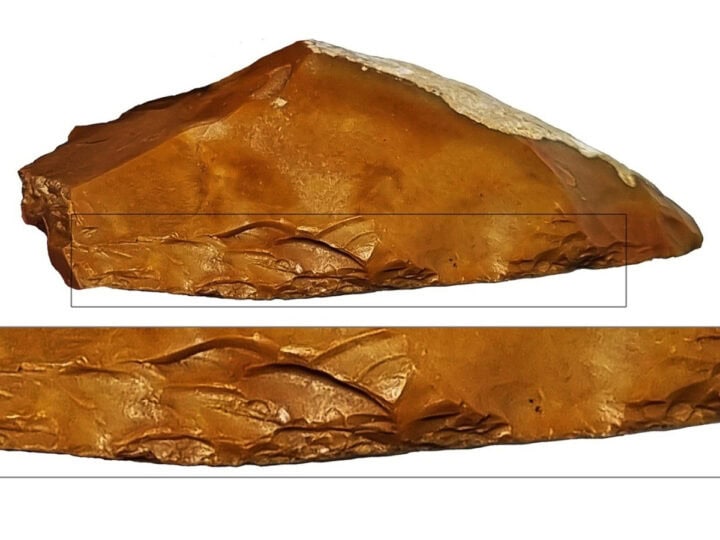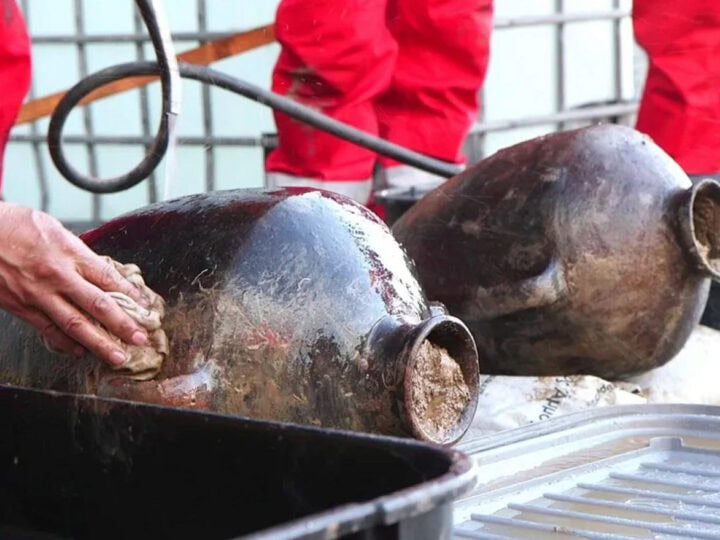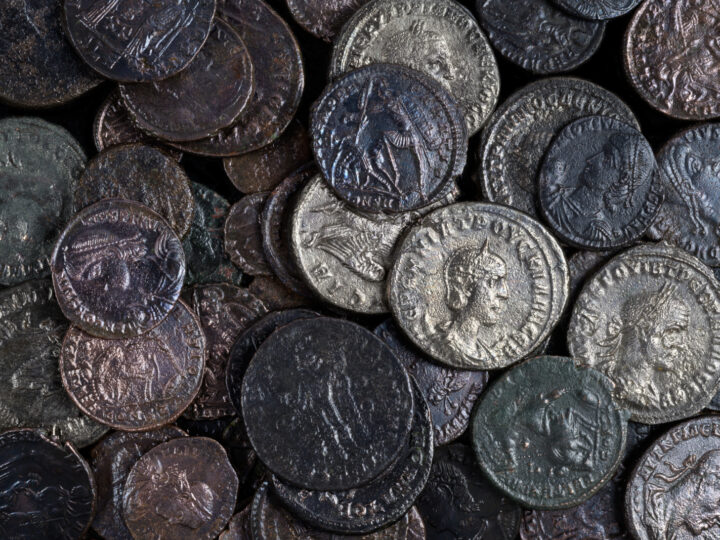An elaborate forecourt leading into a burial cave complex in the Judean lowlands was recently excavated, unearthing new information on the Jewish family that chose the site as its burial tomb some 2,000 years ago and the Christian believers who flocked to it in later centuries.
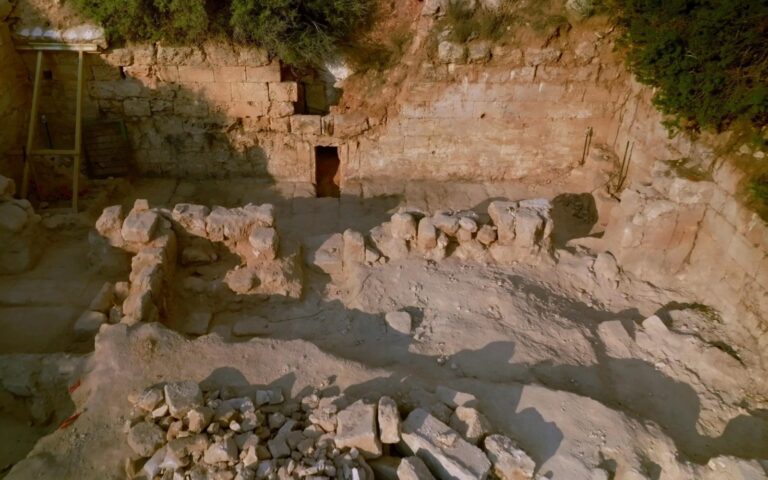
The burial cave complex originally served as the family tomb of what must have been a wealthy Jewish family dating back to the Second Temple era, and in the Byzantine and Early Islamic periods became known as Salome Cave due to a popular tradition that identified the site as the burial site of Salome, the midwife of Jesus.
First exposed in the Lachish Forest by antique looters some 40 years ago, the cave has since undergone professional research.
It is comprised of several chambers with rock-hewn burial niches and broken stone boxes attesting to Jewish burial custom and, judging by the crosses and inscriptions later engraved in the stone wall, evidently became a Christian chapel dedicated to Salome.
“Salome is a mysterious figure,” say Nir Shimshon-Paran and Zvi Firer of the Israel Antiquities Authority.
“The family tomb attests that its owners were a family of high status in the Judean Shefelah [lowlands] in the Second Temple period. The cult of Salome, sanctified in Christianity, belongs to a broader phenomenon, whereby the fifth century CE Christian pilgrims encountered and sanctified Jewish sites. The name Salome may possibly have appeared in antiquity on one of the (no-longer extant) ossuaries in the tomb, and the tradition identifying the site with Salome the midwife developed, the cave becoming venerated by Christianity.”
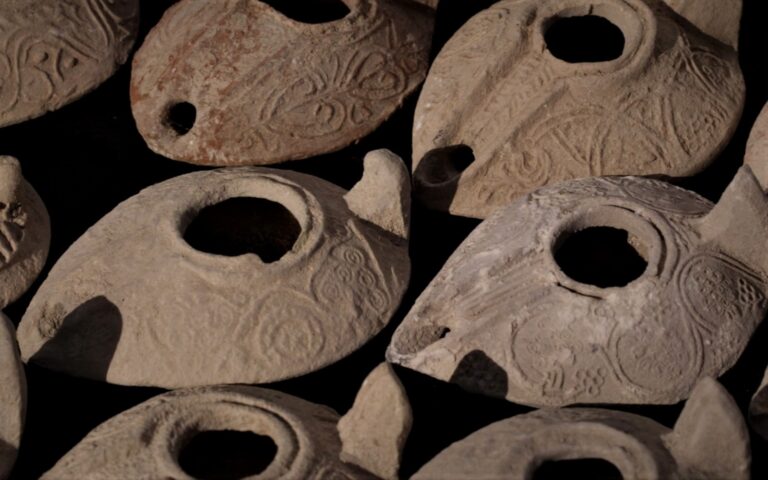
The forecourt that is now being researched is almost 4,000 square feet. It is surrounded by ashlar stone walls and has stone slab and mosaic floors.
The entrances leading into the burial cave and the chapel showcase stones carved with decorative designs associated with Jewish art such as rosettes, pomegranates and acanthus vases.
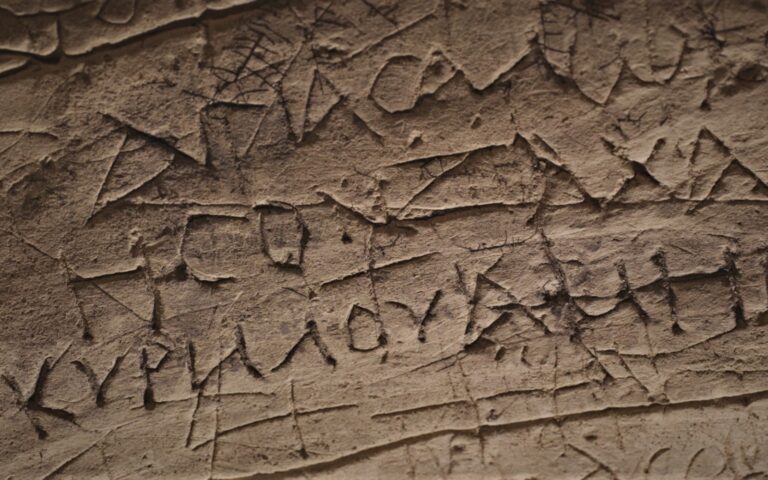
Excavations in the courtyard also uncovered a row of shop stalls that sold or rented clay lamps.
“In the shop, we found hundreds of complete and broken lamps dating from the eighth to ninth centuries CE,” the researchers explain. “The lamps may have served to light up the cave, or as part of the religious ceremonies, similarly to candles distributed today at the graves of righteous figures, and in churches.”
